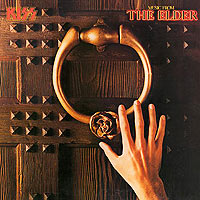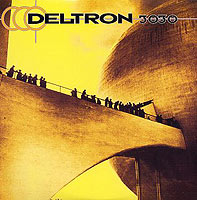Unclear On The Concept: A Brief History Of The Concept Album
Published on September 29th, 2009 in: Issues, Music |
And what of the fabled “Rock Opera”? The Who’s Tommy! or Quadrophenia! This term often gets used interchangeably with “concept album,” and rightly so. It’s basically a series of songs that tell a specific story, rather than songs with a theme but no narrative content. This sets The Pretty Things’ S. F. Sorrow (which tells the tale of a man from his birth to his death) apart from Pink Floyd’s Dark Side of the Moon (which deals with general themes such as aging, insanity, and corruption). The 70s were a fertile time for the concept album, as rock musicians were suddenly realizing that there were no boundaries to what could be included in popular music. Included in this period were famous story-albums The Rise And Fall of Ziggy Stardust and the Spiders from Mars and The Lamb Lies Down On Broadway, but also included equally-famous missteps like KISS’ Music from “The Elder” (which is arguably only bad when compared to the band’s other work).
With the advent of the 1980s, the concept album became declassé, the ancient domain of overindulgent prog rockers. But wait! Over the horizon comes Styx with their late entry, 1983’s Kilroy Was Here, the story of a future time where music is outlawed, so naturally only. . . outlaws. . . hmm. Dennis DeYoung’s natural affinity for Broadway supplied the impetus to take the story on the road, actually acting out the parts before a large video screen, to the chagrin of his bandmates. Like most other successful concept albums, Kilroy provided radio with popular singles, “Don’t Let It End” and “Mr. Roboto,” which didn’t seem to require familiarity with the back story to enjoy. The true mantle of the progressive rockers’ concept albums was assumed by heavy metal, which was unafraid to devote itself to lofty concepts, like Queensrÿche’s Operation: Mindcrime or Iron Maiden’s Seventh Son of a Seventh Son.
In the 1990s, the stigma associated with the concept album began to fade, and the albums started to slowly reappear on the musical landscape. 1995’s Mellon Collie and the Infinite Sadness from Smashing Pumpkins was a thematic album, with the songs revolving about human mortality. Also that year, David Bowie produced 1. Outside, a concept album set at the end of the century, replete with spoken pieces by the various characters, and intended as the first of a “hyper-cycle” of works. Power Metal band Blind Guardian released Nightfall In Middle Earth, an album based on J.R.R. Tolkien’s The Silmarillion, in 1998. Perhaps the most sprawling of the projects from this time are Marilyn Manson’s reverse trilogy of concept albums, Antichrist Superstar, Mechanical Animals, and Holy Wood, which each stand alone as concepts, but together create a larger story of struggle and destruction.

As of the 21st century, the concept album is back in full force. Popular bands are no longer afraid to create conceptual pieces that tell a story, as evidenced by Green Day’s American Idiot and 21st Century Breakdown, both wildly popular albums and fully-fleshed-out musical narratives. Introspective chanteuse Tori Amos released three concept albums during the decade (Strange Little Girls, Scarlet’s Walk, American Doll Posse), The Gorillaz’ Demon Days‘ concept was that it was recorded by a fictional cartoon band. Also included in the world of the concept are voices from the hip-hop community, such as Deltron 3030’s self-titled rap album about a hero pitting himself against oppressive corporations in the far future.
The playing field gets more expansive with every passing year, and artists are becoming more comfortable with telling a cohesive story that spans the individual songs of their album, and in the process creating vibrant worlds for the listener to visit. Just as there is no one way to rock (despite S. Hagar’s assertions to the contrary), there is no one way to describe the concept album.
The author, in what would seem to be a grand case of overkill in researching this article, spent a year completing his own concept album, Love Song for the Hopeless, which is available for free download from ReverbNation here.
Pages: 1 2
2 Responses to “Unclear On The Concept: A Brief History Of The Concept Album”
September 30th, 2009 at 3:11 pm
Nice piece. The full length video that was released to promote the Styx record is a hilarious classic and you should seek it out. ABC did a similar one, but I haven’t been able to find it. I’ll leave out any argument about Kiss albums.. solo work included.Thanks for the free download – I’m heading over to d/l now.
September 30th, 2009 at 7:03 pm
_Shout_ by DEVO is kinda-sorta one; it was originally going to be a film, but WB nixed it, and so it was just a record. But knowing that, you can kinda see the throughline even if it’s not obvious without that knowledge. (And I am one of the only people on earth who really LIKES that album a lot.)
I also dig that pretty much every Magnetic Fields album (or at least since, like, Charm of the Highway Strip) is one, but more of the themed, than the Opera — like Distortion (being Merritt’s attempt at a Jesus & Mary Chain record), i (all the songs start with “I”), 69 Love Songs (derp), um. um. think I’m forgetting one.
I like the idea of the Sgt. Pepper’s concept (or at least the one I’d always been familiar with — basically a set by a pub band), and while I really like the album, I kinda wish they’d done more with the concept, seeing as most pub bands don’t have, say, tablas and sitars at the ready… nor, um, orchestras…
Time limit is exhausted. Please reload the CAPTCHA.